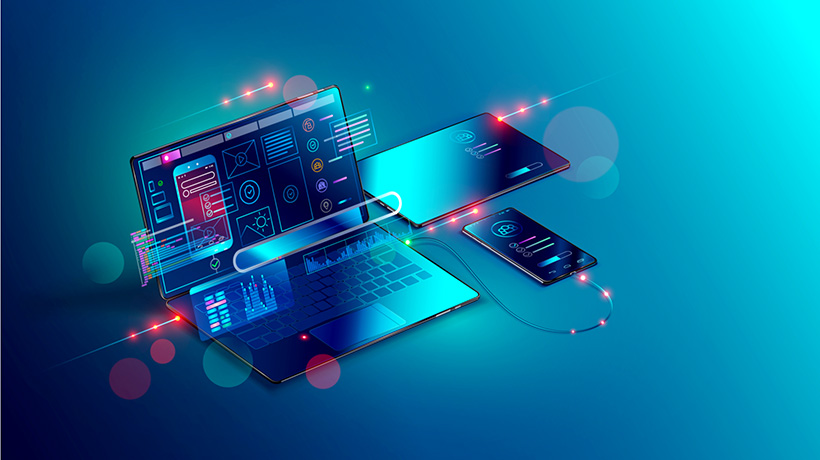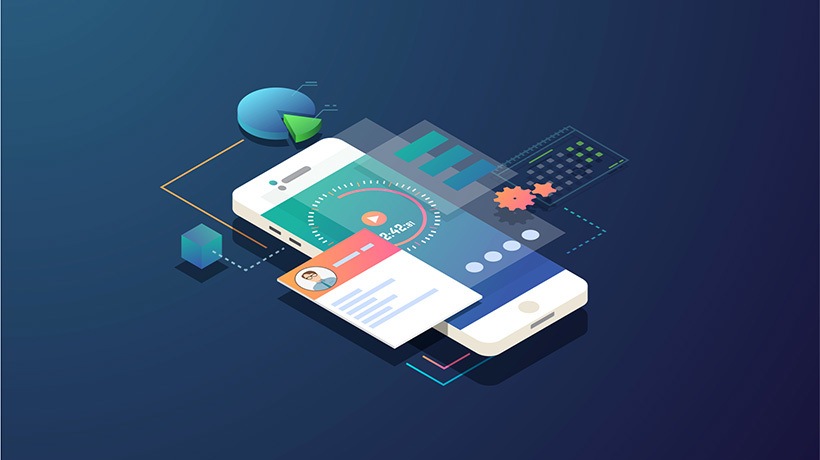Creating And Sharing Content For Mobile Devices
In most of my articles, I describe what research tells us we should do to get better outcomes from workplace learning or debunk fads and folklore in L&D practice, such as microlearning and learner control. This month and next month, I’m discussing what research tells us about consuming and delivering content on smaller screens, especially mobile phones.
Understanding the constraints and benefits of the devices we use helps us design for actual rather than imagined use. Some of the more significant limitations of consuming content and performing tasks on a smaller screen include screen size, interruptions, connectivity loss, split attention, higher interaction cost, and increased cognitive load.
Smaller Screen Challenges
Screen size
What makes mobile phones so, well, mobile, is that they fit into your pocket or purse. Smaller devices mean we see far less content at a time than on a desktop computer. Research shows that the content displayed on a 30-inch monitor would require five screens on a 4-inch display.
One of the major issues with reading on a small screen is the danger of reduced comprehension. Because readers see less of the text at one time, there are fewer organizational cues (such as headings and chunks), and readers must rely on memory to remember and refer to the text that is currently off-screen. These issues are especially problematic for more difficult or complex reading.
Interruptions
Because mobile phones are mobile, they are with us when we’re mobile. When we’re mobile, however, research shows we are far more likely to be interrupted by other people, things going on around us, and experiences that demand our attention (people we are waiting for, our bus stop is coming up, noise, etc.). Attention when using mobile phones is easily interrupted.
Research shows that under these conditions, it’s harder to focus. Mobile device sessions tend to be short. Short sessions may result in less focus and lower comprehension.
Connectivity Loss
Network connections are not always available. Even when they are available, they are subject to signal loss or change. Without a reliable and ongoing connection, every click, scroll, or new page is subject to network connectivity. These interruptions damage your attention, focus, and your ability to remember where you left off and what you were thinking.
Split Attention
Split attention means needing to use the same sense (for example, vision) to process multiple sources of information at the same time. A common example of this in learning materials is the need to process a complex image while reading the description text before or after the text. Research shows we perform poorly when trying to process multiple inputs simultaneously using the same sense.
Typing on a mobile touchscreen keyboard requires us to split attention between what we’re typing and the keyboard. The “keys” are small, and touch typing is not possible. Split attention also occurs when content refers to images, pages, or links that are not currently seen.
Interaction Cost
Interaction cost is the mental and physical effort to do what is needed using the device. Ideal interaction cost means clicking and finding what you are looking for instantly with no scrolling, clicking, or searching. But it’s usually not that easy. We often must read, scan headlines, click links, wait for pages to load, close popup windows, and so forth, so low interaction costs aren’t the norm. Higher interaction costs are tiring.
Increased Cognitive Load
Increased cognitive load (mental effort) on mobile devices results from all these challenges. Having to use a smaller screen, reference previously read content, deal with the loss of focus when connections are lost or you are interrupted, splitting attention, interaction costs from searching for what you need and waiting for links to open, make designing and consuming instruction or performance support more difficult.
As you can see, mobile phones present some serious challenges for learning. Next month, I’ll describe what research says are the best ways to overcome these challenges while delivering content on smaller screens.
Smaller Screen Benefits
Despite serious challenges, mobile phone use for learning has major benefits, including two-way communication, being able to create and share content, and supporting work. Mobile technology, in addition, can solve a significant problem with some other types of workplace learning-access to support.
Two-Way Communication
Most smartphones have a camera and various communication tools. These tools make two-way communication easy and convenient. We can use phones, texting, apps, social media, and photos to communicate with others, including other participants and experts. Notifications allow us to update people about information that is relevant to their specific needs.
Create And Share Content
Woodill contends that the potential of mobile devices for learning isn’t repurposing existing digital or classroom content but creating and sharing content. For example, the research describes nursing staff and park rangers using mobile devices to video tasks and problem solve.
Shared content can be used as instruction, refreshers, or chances to discuss practice. The benefits of creating and sharing content accrue not only to those who view but also to those who create, as content creators must think deeply about what they do and how they do it. Other research shows the use of mobile technologies to show skills and competence, demonstrating that mobile phones can be used in the assessment.
Supporting Work
Mobile phones can support learners as they handle difficult or unfamiliar work challenges. A study with IBM workers found that staff rarely used their phones to learn from formal learning content. But they often used their phones to find online resources to help with work challenges. IBM changed its mobile learning strategy to support critical work challenges through the use of mobile checklists and other resources.
Research shows that staff performs better when accessing accurate task information when they need it (rather than just-in-case). It also helps them be more self-directed and responsible for learning.
While mobile learning and delivering content on smaller screens have many challenges, the potential benefits point the way toward the best uses of mobile phones for learning and support. Next month, I’ll discuss what research tells us to do to minimize these challenges.
References:
- Anderson, M. (2019). Mobile technology and home broadband 2019. Pew Research Center.
- Ahmad, N., & Orion, P. (2010). Smartphones make IBM smarter, but not as expected. American Society for Training and Development 2010.
- Ahmad, N. (2010) Research-based insights inform change in IBM M-learning strategy. Handbook of Research on Mobility and Computing: Evolving Technologies and Ubiquitous Impacts, IBM Center for Advanced Learning, USA.
- Axelson, C., Wårdh, I., Strender, L. E., & Nilsson, G. (2007). Using medical knowledge sources on handheld computers: A qualitative study among junior doctors. Medical Teacher, 29(6), 611–618.
- Ayres, P., & Sweller, J. (2005). The split-attention principle in multimedia learning. In R.E. Mayer, The Cambridge handbook of multimedia learning. New York: Cambridge University Press
- Brandt, E., Hillgren, P.-A., & Björgvinsson, E. B. (2005). Self-produced video to augment peer-to-peer learning. In J. Attewell & C. Savill-Smith (Eds.), Learning with mobile devices. London: Learning and Skills Development Agency.
- Budiu, R. (2015). Mobile user experience: Limitations and strengths. Nielsen Norman Group.
- Liu, T. C., Lin, Y. C., Tsai, M. J. & Paas, F. (2011). Split-attention and redundancy effects on mobile learning in physical environments. Computers and education, 56 (2), 172-181.
- Moran, K. (2016). Reading content on mobile devices.
- Nielsen, J. (2011). Mobile content is twice as difficult. Nielsen Norman Group.
- Pimmer, C., Linxen, S., Gröhbiel, U., Jha, A., & Burg, G. (2012). Mobile learning in resource-constrained environments. A case study of medical education. Medical Teacher. doi:10.3109/0142159X.2012.733454
- Pimmer, C. & Pachler, N. (2013). Mobile learning in the workplace. Unlocking the value of mobile technology for work-based education. In Ally, M., & Tsinakos, A. (Eds.) Increasing Access through Mobile Learning. Commonwealth of Learning Press and Athabasca University.
- Woodill, G. (2011). The mobile learning edge: Tools and technologies for developing your teams. New York: McGraw-Hill Professional.
- Woodill, G. (2012). Mobile McLuhan. The medium is the message: How McLuhan might have thought of mobile learning.
- Whitenton, K. (2013). Minimize cognitive load to maximize usability. Nielsen Norman Group.









